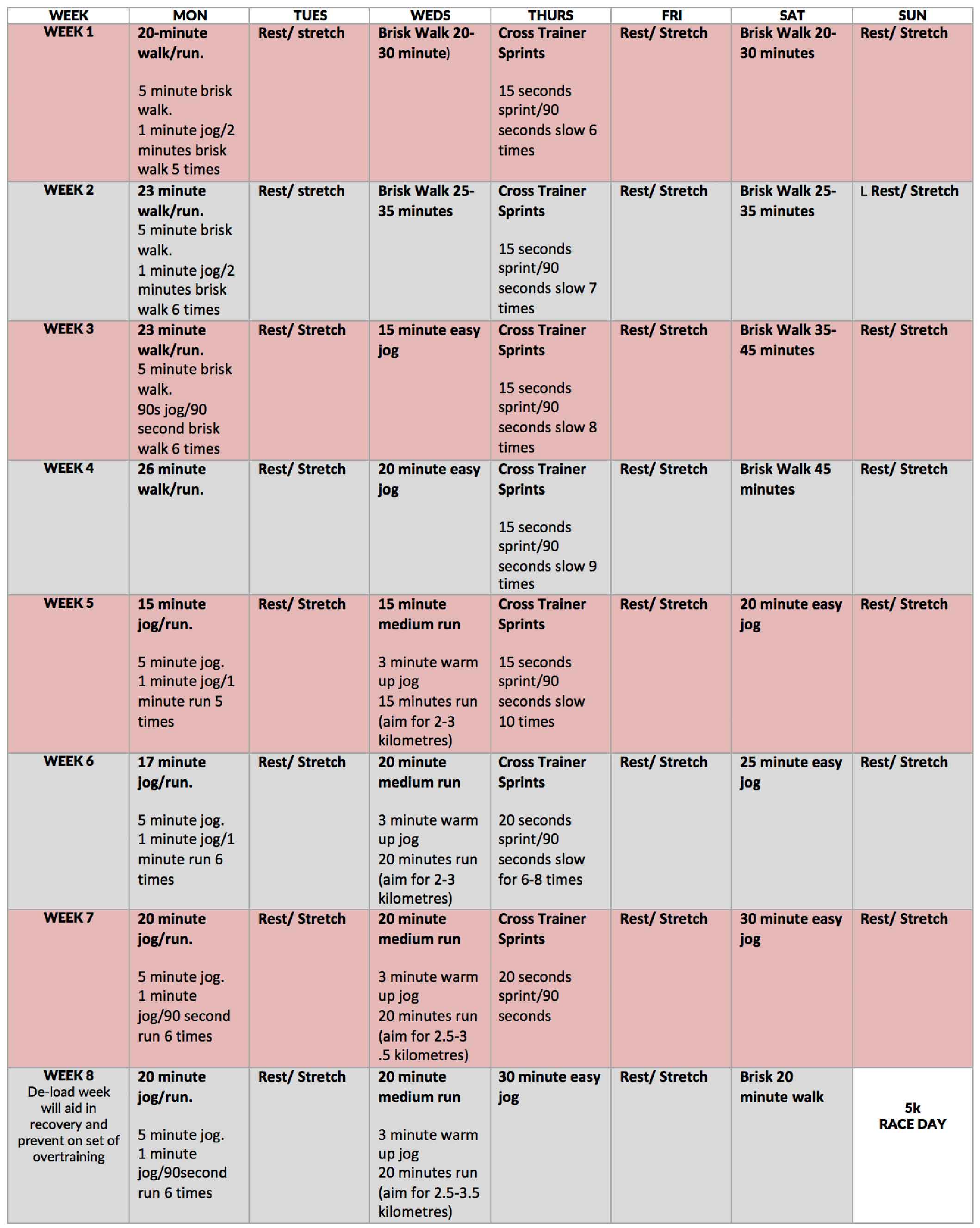Getting into running, especially joining running events, can be really daunting, but with a little bit of work and determination, everyone is capable of running a 5k.
Why run a 5k?
A 5k is the perfect starter distance. It is a challenging distance to all, not just new runners, but is also very achievable mentally and physically for beginners. Beginner runners should ideally start with shorter distances before moving to the longer, more endurance based events such as a 10k or a half marathon. This will help long term with speed when you progress to the longer distances. For example, running a 10k in under an hour is impossible until you can run a 5k in under 30 minutes. As you progress and look to join group events or races, speed will become key and building up to a 5k will really help you develop this.
What prerequisites should runners have before taking on this plan?
As this is a short distance there is no minimum fitness level required. If you can walk, you will soon run after following the programme below! This is aimed at beginner runners.

Understanding the programme
Walk/run
Treat the first 5 minutes as your warm up. You will find you have a better rhythm and breathing pattern in the main part of your session after a brisk walk or slow jog. After your warm up, complete 1 minute or 90 seconds jogging followed by 2 a minute brisk walk until the overall time is complete.
Jog/run
Again as above treat the first 5 minutes as a warm up. After your warm up complete 1 minute of slow jogging followed by 1 minute of a faster run. This is not a sprint but should be faster than your 5k pace.
Easy jog
This session is a continuous jog at a steady pace similar to your warm up pace. The aim is to run continuously without stopping. This should not be an overly strenuous session but aimed at building endurance and confidence.
Medium run
This session is aimed at building distance into your continuous run. Aim to maintain the same pace throughout the run while running the furthest you can in the allocated time. This is a harder run than the easy jog.
Cross Trainer sprints
Sprints can be completed on either a cross trainer or bike. Both of which are non-weight bearing which allows your joints to rest. Each 15-20second sprint must be at maximum speed followed by a 90 second slow recovery. The recovery should be approximately 40% of your maximum speed.
Week 8 - deload week
As you can see the volume is lower on week 8. This allows your body to rest in preparation for the 5k race. Keeping the volume high will deplete glycogen/energy levels in the lead up to the race. Taking active recovery the day before the race, such as a 20 minute brisk walk will keep you fresh and hungry for the race.
This programme should be achievable for anyone, no matter your fitness level - so why not give it a go? You'll be joining your local park run in no time!
If you have any questions or need some further advice, just email me on becky@halltrainingsystems.com. I'd be happy to help!


